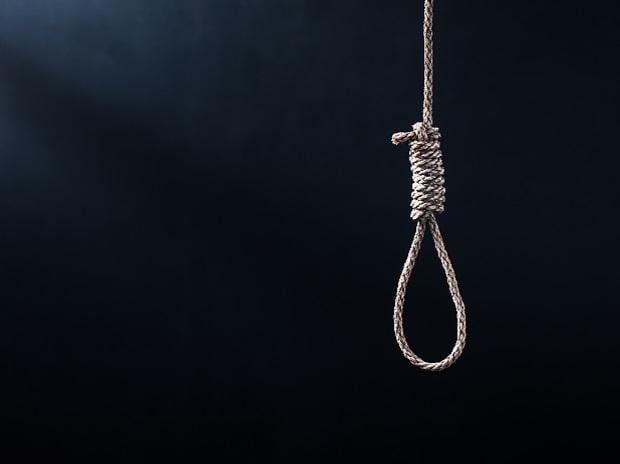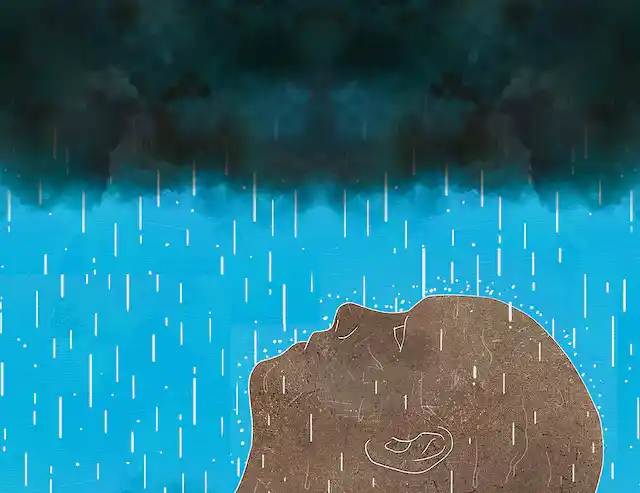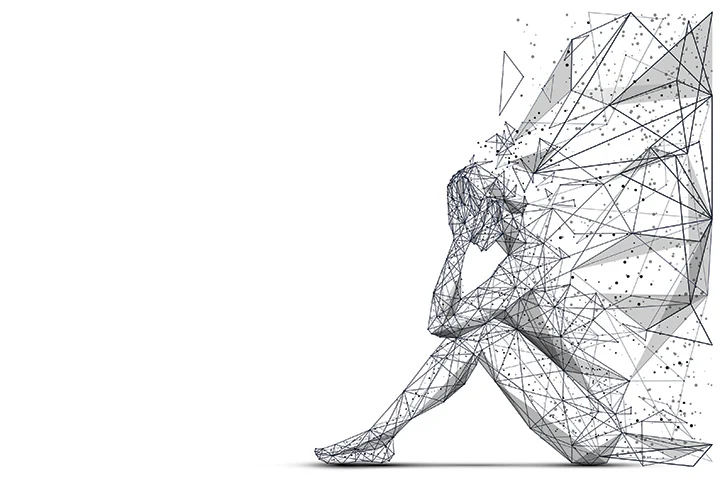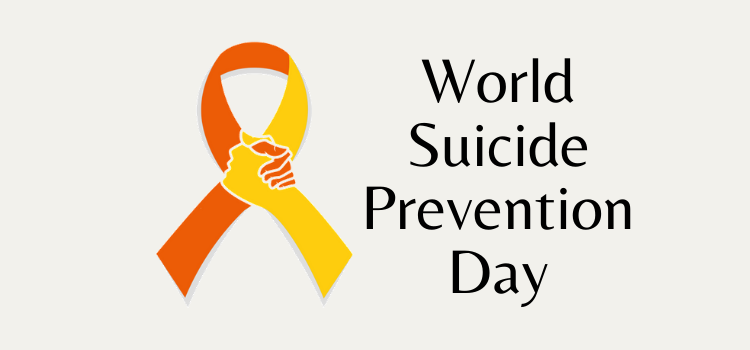By Polina Pallieraki,
September 10 has been established as World Suicide Prevention Day, by the decision of the World Health Organization, in order to focus global attention on an unpleasant fact: the loss of about 800,000 people every year from self-injuries.
More than 500 people commit suicide in recent years in our country, leaving behind at least 5,000 mourners annually. According to international research and studies, for each suicide at least 5-10 people are left behind who mourn, experiencing not only the emotional burden of mourning but also the psychosocial consequences of the stigma of suicide, while 135 people are considered to be directly affected by each suicide. Furthermore, in Greece, we have no record of non-fatal suicide attempts, which are estimated to be almost 25 times more than recorded suicides.

Suicide is a major public health problem and as such is recognized and addressed at the European and global levels. It potentially affects anyone, regardless of gender, race, or socioeconomic class. In this direction, the World Health Organization recommends 1990 the universal recognition of suicide as a public health issue and the development of national prevention programs, which will be interconnected with public health policies. Suicide is not a fatal event. 95% of suicides could have been prevented.
The World Health Organization Report
Every 40 seconds a person around the world ends their life — more people die by suicide each year than in war, according to the World Health Organization. Hanging, poisoning and shooting are the most common methods of suicide, the World Health Organization said, calling on governments to adopt suicide prevention and de-escalation plans to help people cope with stress and reduce access to means of suicide.
“Suicide is a global public health problem. All ages, sexes, and regions of the world are affected and any loss is too much”, the World Health Organization report states. Suicide is the second leading cause of death among young people aged 15 to 29, after road traffic accidents, and among teenage girls aged 15 to 19, it is the second leading cause of death after death in childbirth. In adolescent boys, suicide is the third leading cause of death after traffic accidents and interpersonal violence.

In all, nearly 800,000 people kill themselves each year — more than die of malaria or breast cancer, war or homicide, the World Health Organization added. Global rates have fallen in recent years — a 9.8% decline between 2010 and 2016 — but the decline is uneven. In America’s region, for example, rates increased by 6% from 2010 to 2016. Also, according to the research, three times as many men as women commit suicide in rich countries, in contrast to low and middle-income countries, where the rates are more equal.
“Suicides are preventable”, suggests World Health Organization Secretary-General Tedros Adhanom Ghebreyesus. “We call on all countries to include proven suicide prevention and de-escalation strategies in their national health and education programs”.
The World Health Organization has proposed that limiting access to pesticides is one of the most effective ways to rapidly reduce the number of suicides. Pesticides are widely used and usually cause death because they are very toxic, have no antidotes, and are usually used in remote areas where there is no medical help nearby. Guyana, a former British colony located between Venezuela and Suriname, is the country with the highest suicide rate per capita (30.2 per 100,000), with an increased number of pesticide ingestions. This is followed by Russia, where excessive alcohol consumption is blamed for the increased suicide rate. Other countries with high rates include Lithuania, Lesotho, Uganda, Sri Lanka, South Korea, India, and even Japan. The World Health Organization cites studies in Sri Lanka where pesticide bans have led to a 70% reduction in suicides and an estimated 93,000 lives saved between 1995 and 2015, according to some estimates.
Statistics of the EU
The number of deaths caused by self-inflicted injuries, as reported by the 28 Member States, amounted in 2016 to 53,500, a figure corresponding to 1% of all deaths recorded that year. More than 3/4 of suicide deaths were among men (77%). Based on the figures as broken down by age and sex, the proportion of deaths caused by self-harm was highest among men aged 20-24 (21%). For women, the percentage was higher between the ages of 15-19 (16%). However, for both men and women, more than half of deaths due to suicide were among people aged 50 and over.
According to the data of the Suicide Observatory of the Day Center for Suicide Prevention, in the years 2018, 2019, and until 8/31/2020:
- The number of suicides shows a steady upward trend
- The majority of the self-employed were men
- People 80 and over and 50 to 59 years old have the most suicides compared to other age groups
- The regions with the highest suicide mortality rate are Crete, Thessaly, and Attica
- The most frequent method of suicide in the last three years is hanging, followed by falling from a height
- The time period in which the highest suicide rates occurred is during the spring and summer months (March to August).
The under-reporting of suicides is attributed either to the difficulty of ascertaining that there was actually suicidal intent (as in the case of an accident), or to social, religious, and other reasons. It is a fact, therefore, that deaths by suicide are much more than those officially recorded, and their effects on the lives of those left behind in mourning should not be overlooked.

Economic crisis and suicide
According to the data presented by Professor of Psychiatry Konstantinos Fountoulakis, at the 9th Scientific Conference of the Department of Medicine of the University of Thessaloniki (March 2020), suicide deaths increased by 33% in the period 2009-2015, compared to the average of the previous decade. Of this suicide rate, 1/3 could be directly attributed to unemployment, 1/3 to other effects of the economic downturn, and the remaining 1/3 to unknown reasons. The effect of unemployment is limited to men aged 20-24 as well as men aged 45-49 and 55-59, while women appear to be more affected by inflation.
However, despite the increase in suicides during the period of the financial crisis, Greece is among the five countries with the lowest suicide rate in the whole world (traffic accidents fall, fires, etc.) their number will be less than the number of deaths by suicide in Austria.
Comparing economic data and suicide data in Greece during the period 2000-2015, Mr. Fountoulakis stated that while in 2000 the number of suicides was 382, in 2015 the number reached 529, while during this fifteen-year period the number of suicides peaked in 2014 reaching 565. At the same time, he noted that at the highest point of economic development in the country in the years 2005 and 2006 there was also a peak in suicides (400 in 2005 and 402 in 2006).
Mr. Fountoulakis reported that there is a “concentration of suicides” during the months of March and June as well as in the winter. He also added that suicides cannot be predicted as for every 1,600 people who have the thought “what if I were to die” 1/4 attempt suicide and one ends up killing themselves, but it is unknown what happens to the remaining 3/4. He also noted that while unemployment rose sharply in the period up to 2015, the suicide situation was unclear at first glance. In fact, he stated that regions of the country such as Crete, where there was the lowest unemployment, had a higher suicide rate, while in Macedonia, which had the highest unemployment, there was a lower suicide rate.
You are not alone: prevention resources
If you or a loved one face such suicidal tendencies or thoughts, reach out to mental health specialists and/or seek immediate support on SOS helplines.
References
- International association for suicide prevention. Available here
- National SOS helpline for suicide prevention (Greece). Available here




